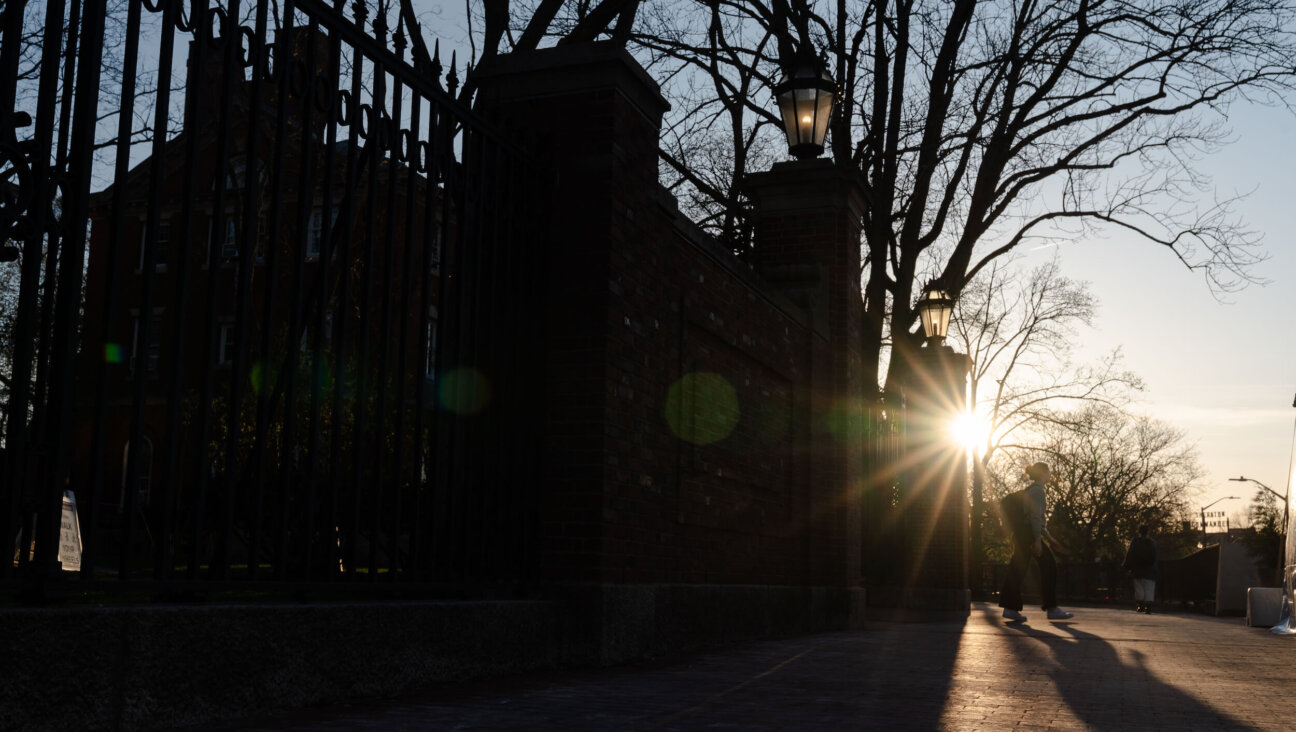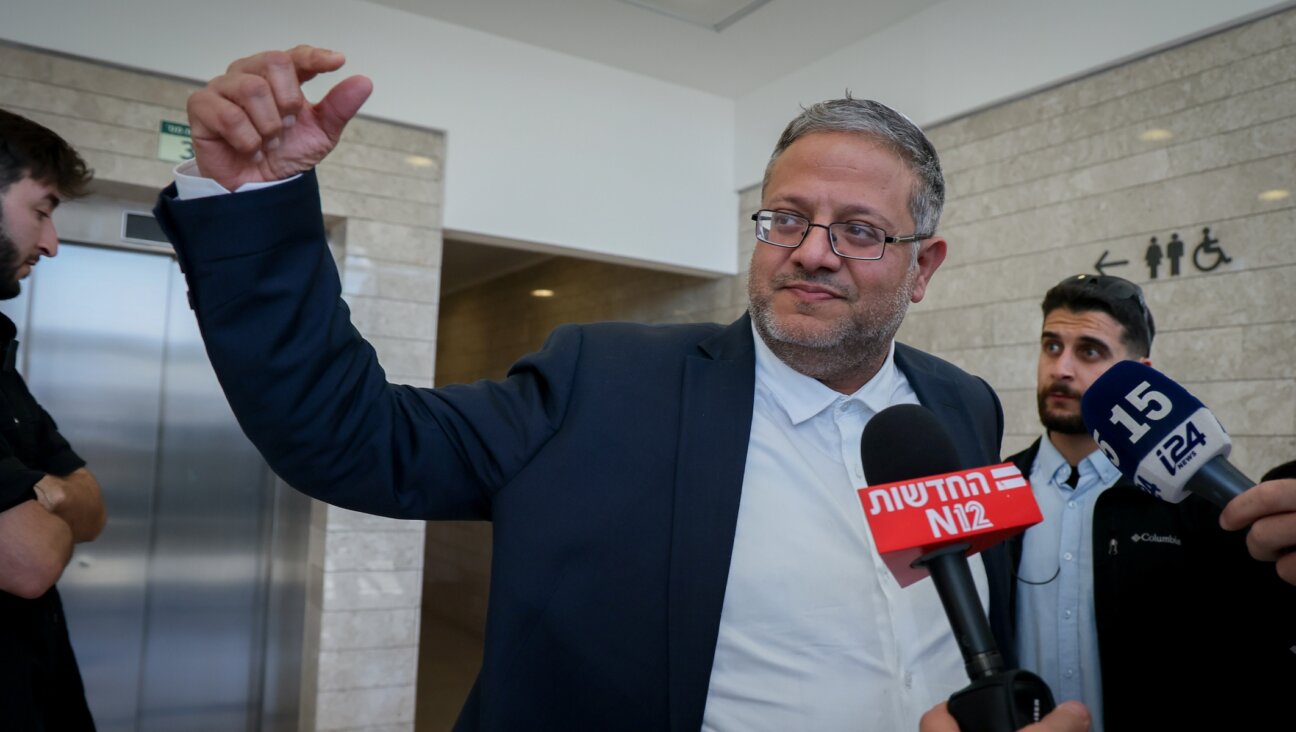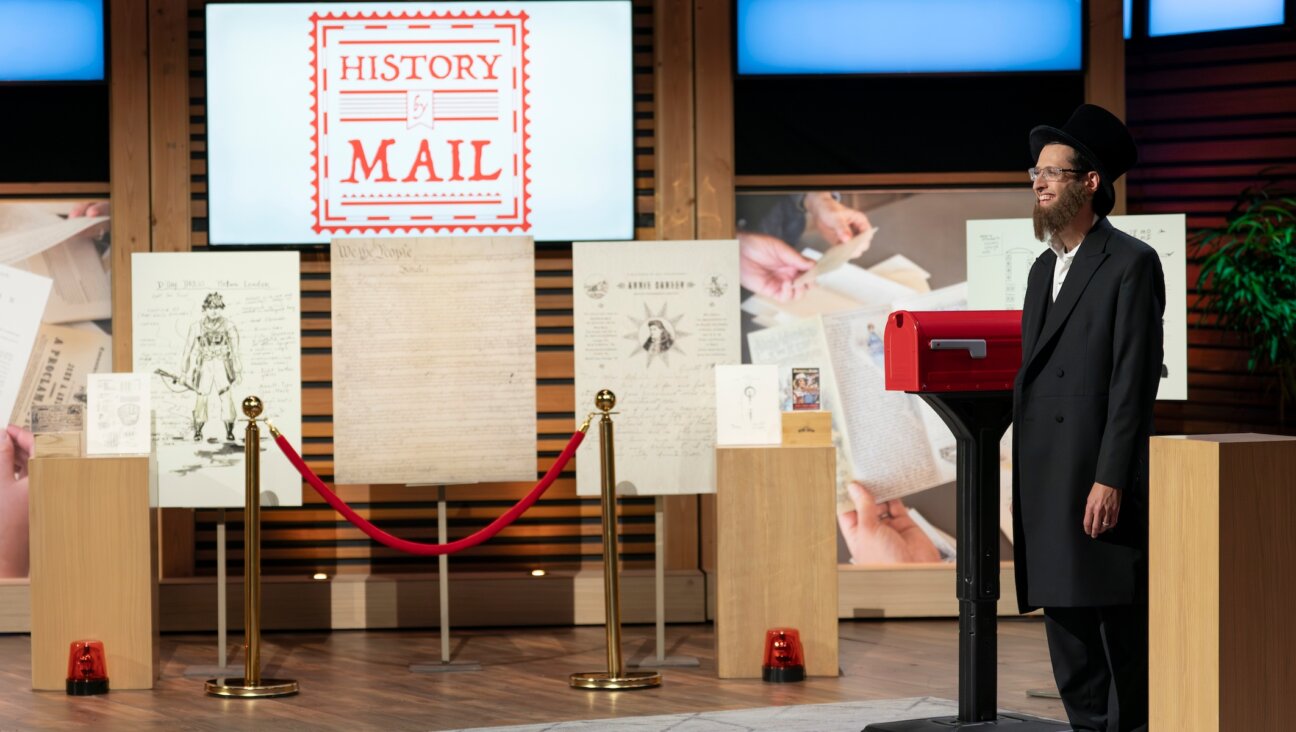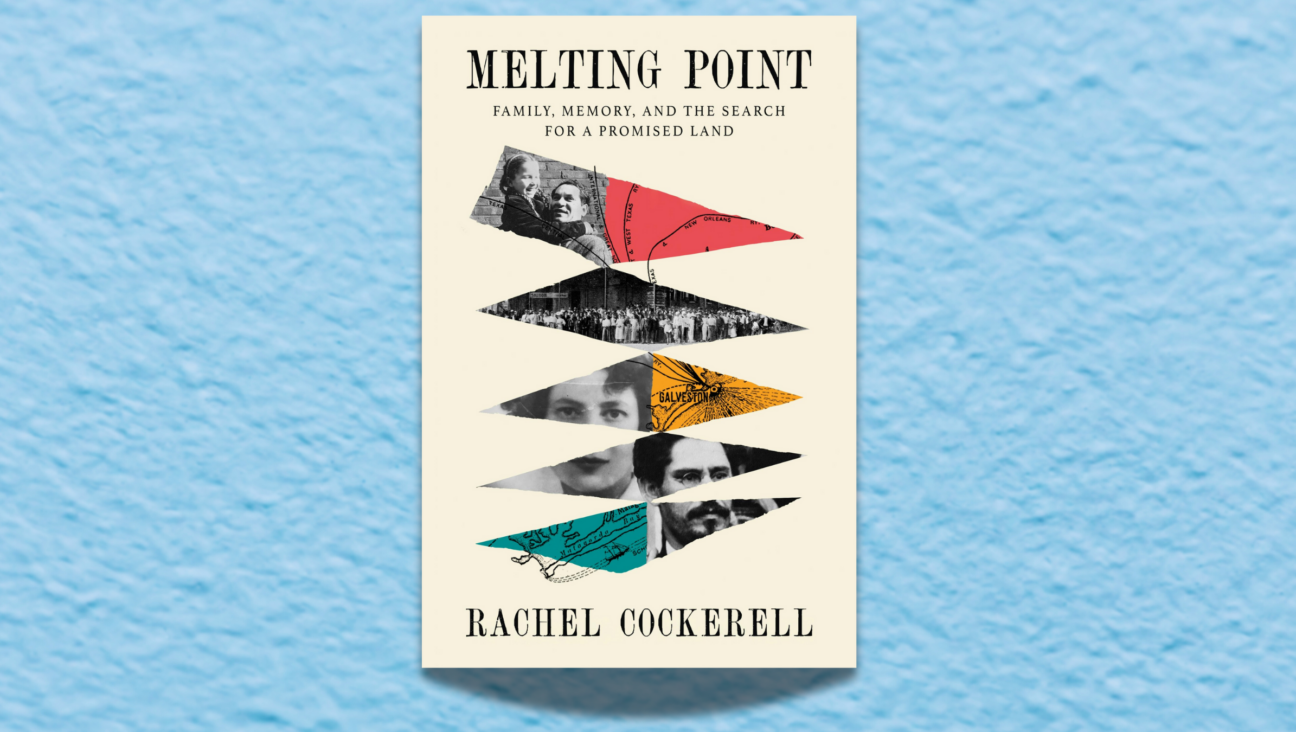Art and Apocrypha: The Fraught Beauty of the Dead Sea Scrolls

TOOLS OF THE PEDAGOGUE: walking and scrolls for reading have survived for two millennia. They, along with other objects and scroll fragments, are on display at New York?s Jewish Museum until January.
They survived, untouched, for nearly two millennia, but the history of the Dead Sea Scrolls has been, since their discovery in 1947, fraught with controversy. Ownership, religious patrimony, Christian-Jewish relations and the odor of antisemitism emanating from some Christian scholars who controlled access to the scrolls — these have roiled the academic and public-affairs worlds for decades. Hovering above all these, of course, are the ultimate questions: Who wrote the scrolls, and when? And why were they written?

TOOLS OF THE PEDAGOGUE: walking and scrolls for reading have survived for two millennia. They, along with other objects and scroll fragments, are on display at New York?s Jewish Museum until January.
In a sparkling exhibition, The Dead Sea Scrolls: Mysteries of the Ancient World, New York’s Jewish Museum has wisely avoided these controversies. In point of fact, over the past 50 years, the story of the scrolls all too often had nothing to do with the scrolls themselves. The Jewish Museum’s exhibition is telling us, in effect, “Let’s get back to the real story — how the scrolls talk to us.”
The exhibit is gemlike in its compact brilliance, and the viewer normally would not expect to learn much in such a limited show. But the viewer ought not be gulled: This show is hardly limited; the few artifacts talk to the person standing before them. The essay that greets the viewer at the entrance to the exhibition neatly contextualizes the scrolls in the history of Judea, and the captions accompanying the scrolls are clear and instructive. The few artifacts accompanying the scrolls — a pair of sandals, some pottery — give a sense of context, as well. But don’t expect to become a scrolls scholar as a result of the exhibition: The museum’s agenda in showing these mysteries of the ancient world is quite different.
There have been other related exhibitions over the years, even apart from the Hebrew University of Jerusalem’s substantial display at the Shrine of the Book. These have focused more narrowly on the history of the objects, or on conservation efforts, or on the scrolls as literature — and, of course, on authorship. An example of an exhibition that took sides on the “Who wrote the scrolls?” controversy and looked at the scrolls as literary artifacts was the splendid Library of Congress/New York Public Library’s 1993 exhibition, Scrolls from the Dead Sea: The Ancient Library of Qumran and Modern Scholarship, which asserted the view of early scrolls scholars: that the scrolls belonged to a monastic Jewish sect living near the excavation site, possibly the Essenes. The conventional wisdom of 50 years ago now looks simplistic: Today there is a healthy debate among scrolls scholars over who wrote the scrolls. Were they indeed the Essenes? Were they Sadducees, upper-class Judeans whose power-base was the Temple? Was the settlement a secular and not a religious one?
The Jewish Museum’s exhibition is different from other displays of the scrolls; it does not plant the flag in the soil of any one theory of the scrolls’ provenance, but concentrates on their messages. In this tiny and exquisitely curated exhibition, fragments of but six scrolls — out of the 900 found, and tens of thousands of other fragments — were chosen, each one very different from another. There is a fragment from the book of Jeremiah, one of the earliest copies of the Hebrew Bible in existence; there is an early example of Hebrew prayer, from Words of the Luminaries; there is a fragment from the Apocryphal Book of Tobit, a text not included in Hebrew Scripture but accepted into some versions of the Christian Bible; there is a text from the Aramaic Apocryphon of Daniel, and there are fragments from two books of regulations: the Community Rule, on the ordering of the affairs of the community, and the War Rule, on how a great war at the end of days should be conducted.
Fascinating fragments all — but the brilliance and charm of the exhibition lie in the passages chosen by curator Sarah Braunstein. Each is poetic, instructive, moving in its own way; individually and collectively, the passages sing to the viewer — in the same way that they sang to the people who read them in the desert millennia ago. This from The Book of Tobit: “…‘Jerusalem shall sing a psalm of exaltation. Blest be the God who exalts you ….’ So were completed the words of Tobit’s thanksgiving….” And from the War Rule, describing a great war at the end of days: “The priests shall blow the battle trumpets to strike the lines of nations.”
“The passages put the visitor back into the time when they were written,” Braunstein said. This is The Jewish Museum working at its best, as a historical museum rather than as an art museum.
And this is the ultimate goal — and the nuanced message — of The Dead Sea Scrolls: Mysteries of an Ancient World. In curating the exhibition to focus on the texture of the scrolls’ language rather than on the controversies surrounding the scrolls themselves, The Jewish Museum is not just avoiding conflict. It is showing that it has a keen understanding of the difference between taste and politics when it comes to the fields of archeology, art and literature. In freeing the art from the politics, this exhibition sensitively bridges the gaps between art and politics, between questions of artistic taste and those of religious sensitivities. In the dim light of the scrolls gallery, the viewer is able, after two millennia, to converse with Jeremiah, Tobit and Daniel.
Here’s a sociological postscript: Visiting the exhibition while I was in the gallery were two student groups from Christian prep schools, and a group of elderly Orthodox Jews from the Boro Park section of Brooklyn. Is this perhaps not the ultimate message — that of an enhanced understanding of shared history, if not patrimony — of the Dead Sea Scrolls?
*Jerome A. Chanes’s recent works include “Whither American Zionism?” and “The Future of American Judaism,” both forthcoming in 2009. He is faculty scholar at Brandeis University’s Cohen Center for Modern Jewish Studies, and serves on the faculty of the Academy for Jewish Religion. *
The Forward is free to read, but it isn’t free to produce

I hope you appreciated this article. Before you go, I’d like to ask you to please support the Forward.
Now more than ever, American Jews need independent news they can trust, with reporting driven by truth, not ideology. We serve you, not any ideological agenda.
At a time when other newsrooms are closing or cutting back, the Forward has removed its paywall and invested additional resources to report on the ground from Israel and around the U.S. on the impact of the war, rising antisemitism and polarized discourse.
This is a great time to support independent Jewish journalism you rely on. Make a Passover gift today!
— Rachel Fishman Feddersen, Publisher and CEO
Most Popular
- 1

News Student protesters being deported are not ‘martyrs and heroes,’ says former antisemitism envoy
- 2

News Who is Alan Garber, the Jewish Harvard president who stood up to Trump over antisemitism?
- 3

Fast Forward Suspected arsonist intended to beat Gov. Josh Shapiro with a sledgehammer, investigators say
- 4

Politics Meet America’s potential first Jewish second family: Josh Shapiro, Lori, and their 4 kids
In Case You Missed It
-

Opinion Why can Harvard stand up to Trump? Because it didn’t give in to pro-Palestinian student protests
-

Culture How an Israeli dance company shaped a Catholic school boy’s life
-

Fast Forward Brooklyn event with Itamar Ben-Gvir cancelled days before Israeli far-right minister’s US trip
-

Culture How Abraham Lincoln in a kippah wound up making a $250,000 deal on ‘Shark Tank’
-
Shop the Forward Store
100% of profits support our journalism
Republish This Story
Please read before republishing
We’re happy to make this story available to republish for free, unless it originated with JTA, Haaretz or another publication (as indicated on the article) and as long as you follow our guidelines.
You must comply with the following:
- Credit the Forward
- Retain our pixel
- Preserve our canonical link in Google search
- Add a noindex tag in Google search
See our full guidelines for more information, and this guide for detail about canonical URLs.
To republish, copy the HTML by clicking on the yellow button to the right; it includes our tracking pixel, all paragraph styles and hyperlinks, the author byline and credit to the Forward. It does not include images; to avoid copyright violations, you must add them manually, following our guidelines. Please email us at [email protected], subject line “republish,” with any questions or to let us know what stories you’re picking up.











